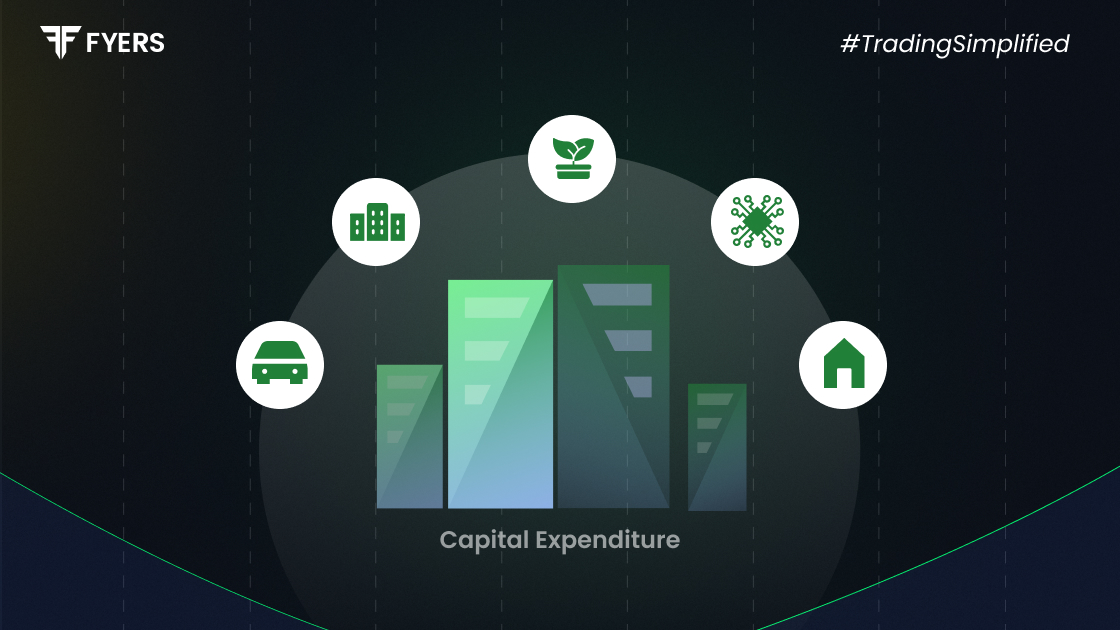

 10 Jul, 2025
10 Jul, 2025
 4 mins read
4 mins read

When businesses invest in long-term assets such as land, buildings, or machinery, they are making what is called a Capital Expenditure (CapEx). These investments are not meant for day-to-day operations but are critical for future growth and efficiency. Understanding CapEx is essential for anyone involved in financial planning, accounting, or business management.
In this blog, we’ll explore what capital expenditure is, its types, importance, examples, and the challenges businesses face in managing CapEx.
Capital Expenditure (CapEx) refers to the funds used by a company to acquire, upgrade, or maintain physical assets such as property, plants, technology, or equipment. These expenses are made to improve or extend the life of existing assets or to create new assets that benefit the business for more than one accounting period.
CapEx in simple terms
If a company buys a new factory machine or constructs a warehouse, it is making a capital expenditure. These costs are not immediately expensed in the income statement. Instead, they are capitalised and depreciated over time.
CapEx is a key part of a company’s financial planning and budgeting process.
Capital expenditures are broadly classified into two main categories:
This includes physical assets such as:
Land
Buildings
Machinery
Vehicles
Computers and other office equipment
These are visible, measurable, and depreciable assets used in the daily operations of a business.
This includes non-physical assets that provide long-term value, such as:
Patents
Licences
Trademarks
Software development
Research and development (R&D)
Although intangible, these assets are critical for innovation and market competitiveness.
Capital expenditure plays a vital role in business growth and sustainability. Here's why it matters:
Capacity Expansion – Enables a business to increase production or service capacity
Efficiency Improvements – Investing in modern equipment can reduce costs and boost productivity
Competitive Advantage – Upgrading technology or acquiring new assets helps stay ahead of competitors
Long-Term Growth – CapEx decisions reflect a company's long-term vision and financial health
Asset Creation – Builds up the fixed asset base, strengthening the balance sheet
For investors, capital expenditure indicates how a company is positioning itself for future growth.
Here are some common capital expenditure examples across different sectors:
Manufacturing – Buying new production machinery or setting up a new plant
Retail – Opening a new store or refurbishing an existing outlet
IT Sector – Investing in cloud infrastructure or developing proprietary software
Healthcare – Purchasing advanced medical equipment or building a new hospital wing
Government – Constructing highways, schools, or public utility infrastructure
These expenditures are generally large in value and have a lasting impact on the organisation.
Despite their importance, capital expenditures come with certain challenges:
High Initial Cost – Requires significant upfront investment
Long Payback Period – Returns on CapEx may take years to materialise
Planning Complexity – Needs careful forecasting, budgeting, and risk assessment
Depreciation and Maintenance – Ongoing costs for asset upkeep and accounting depreciation
Irreversibility – Most CapEx decisions are long-term and not easily reversed
Therefore, companies must evaluate CapEx proposals with diligence, using tools like ROI, NPV, and IRR for decision-making.
Capital Expenditure (CapEx) is crucial for building, expanding, and sustaining a business over the long term. Whether it’s acquiring new machinery, developing software, or constructing infrastructure, CapEx decisions reflect a company's ambition and operational strength. However, due to the size and strategic nature of these investments, careful planning and evaluation are essential.
Understanding CapEx also helps investors, analysts, and stakeholders gauge a company's growth potential and asset quality.
CapEx (Capital Expenditure) refers to long-term investments in physical or intangible assets. OpEx (Operating Expenditure) includes day-to-day expenses like rent, utilities, and salaries. CapEx is capitalised, while OpEx is fully expensed in the income statement.
CapEx in financial statements appears under “Investing Activities” in the Cash Flow Statement. It also affects the Balance Sheet through fixed assets and depreciation in the Income Statement.
CapEx is important because it enables companies to expand operations, improve efficiency, and stay competitive. It reflects a company's commitment to future growth and sustainability.
Government capital expenditures include spending on infrastructure, public buildings, roads, railways, and other long-term assets. These investments contribute to national development and public welfare.
Calculate your Net P&L after deducting all the charges like Tax, Brokerage, etc.
Find your required margin.
Calculate the average price you paid for a stock and determine your total cost.
Estimate your investment growth. Calculate potential returns on one-time investments.
Forecast your investment returns. Understand potential growth with regular contributions.